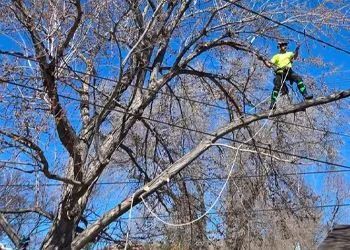Canyon Falls Tree Works Blog
Top Signs of a Hazardous Tree

Trees are an essential part of any landscape, offering shade, beauty, and value to your property. However, when a tree becomes unstable or unhealthy, it can pose serious safety risks to people, buildings, and nearby power lines. At Canyon Falls Tree Works, we specialize in identifying and managing hazardous trees before they become a danger. Knowing the warning signs can help you act early and avoid costly damage.
Fungal Growth and Decay
One of the most common indicators of a hazardous tree is visible decay. Mushrooms or fungal growth on the trunk or near the base often point to internal rot, which can compromise the tree’s structural integrity. Even if the tree still has leaves, decay inside can make it prone to sudden failure.
Cracks and Splits
Cracks or splits in the trunk or large limbs are major red flags. These structural weaknesses may worsen over time, especially during storms or high winds. Trees with these issues are more likely to break or collapse without warning.
Leaning Trees
A noticeable lean—especially if it has developed suddenly or is worsening—can indicate a problem with the root system or soil stability. While some trees naturally grow at an angle, those with new or shifting leans may be at risk of falling.
Dead or Hanging Branches
Dead limbs or large hanging branches, often called “widowmakers,” pose an immediate hazard. These can fall at any time, especially during windy conditions, putting people and property at risk.
Sparse Foliage or Bare Sections
If parts of your tree aren’t producing leaves or seem to be thinning out, it may signal stress or disease. Uneven canopy growth and premature leaf drop are common signs that the tree is struggling.
Root Damage and Soil Issues
Healthy roots are critical to a stable tree. Damage from construction, erosion, or disease can weaken root systems. Soil heaving or visible root exposure may suggest that the tree is no longer secure in the ground.
If you notice any of these signs or have other concerns, don’t delay contacting Canyon Falls Tree Works. Our local arborists in Rapid City provide expert tree assessments and solutions to protect your home, family, and property. Call our local tree care company in Rapid City at 605-250-2267 to schedule a professional inspection and get peace of mind. We will be glad to answer any questions that you may have or provide you with the information you need to make an informed decision.






